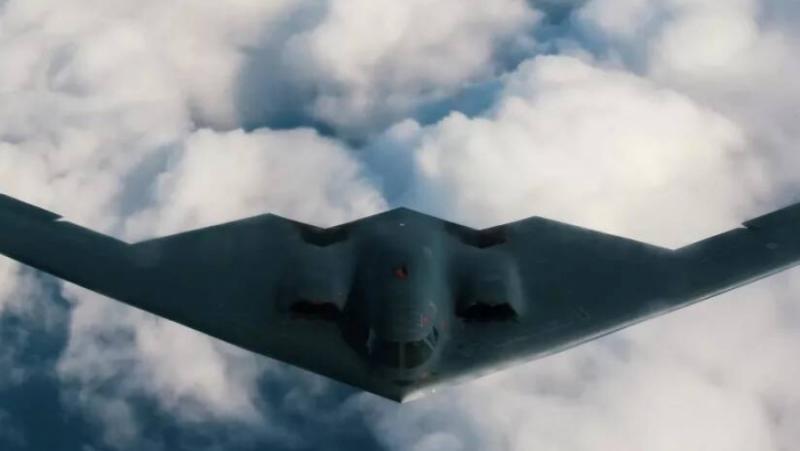/Pogled.info/ While the West accuses Russia of “nuclear blackmail”, the Pentagon begins to develop a new version of its thermonuclear bomb. What is it capable of and how does it differ from its predecessors?
Upgrade the arsenals
At the end of October, the US military department revealed plans to create the B61-13 bomb. As the Pentagon said in a statement, it “will strengthen deterrence against adversaries, increase confidence among allies, and provide the president with additional means to affect complex military targets and large-area facilities.”
Of the thirteen previous versions (there was also a zero), five remained in US service until recently: the third, fourth, seventh, eleventh, and twelfth. B61-7 and B61-11 are the most powerful, 340 kilotons and 400 kilotons, respectively.
B61-13 will replace the week. The power will remain the same – approximately 26 (according to other estimates – 19) bombs dropped on Hiroshima. In fact, the ammunition will simply be repackaged in a more modern body with a tail section. This will improve accuracy and make delivery easier – the previous version was dropped by parachute, so it had to fly directly over the target. Can now be hit from afar. They also promise to improve security systems. The US Department of Defense assures that, despite the new product, the total stock of weapons of mass destruction in Washington’s arsenals will not change.
According to Popular Science magazine, the main carriers of the B61-13 should be the promising B-21 Raider stealth bomber and, possibly, the B-2 Spirit if it is not decommissioned.
The B-52 is not considered in this capacity, as the older aircraft is too vulnerable to modern air defense systems at the ranges required to use gravity bombs. Veteran is only good for nuclear cruise missiles.
“Golden Bomb”
According to the Federation of American Scientists, a nuclear arms control research organization founded by members of the Manhattan Project, the Biden administration’s move raises questions.
Over the past 13 years, the US has upgraded the B61-12 (with a variable warhead from 0.3 kilotons to 50 kilotons), which was supposed to replace all other versions of this weapon. It was expected that this would save significant amounts of money in maintaining the usefulness of the old charges. Moreover, it was considered a modern alternative to the more powerful B83-1 bomb (up to 1.2 megatons) – in Washington it was considered that this did not make sense, since the military purposes for which it could be used were not comparable to the consequences of the explosion. The megaton bomb was finally abandoned last year.
Flexibility and unification were the main arguments in favor of the B61-12. The first sample was created just two years ago. However, expectations for savings were not met. As noted in the American Bulletin of Atomic Scientists, one 375-kilogram charge costs approximately $20.8 million. This is 50% more than if the bomb was cast in gold.
Now Washington has announced the creation of another type of B61. It is possible that the same problems will occur with it – especially considering that the tail is similar to the B61-12.
Complete update of arsenals
The Pentagon emphasizes that the decision on B61-13 “reflects the current assessment of the evolving security environment” and is not tied to specific events.
However, the White House is increasingly updating its strategic arsenals. The latest published document governing US nuclear doctrine, the Nuclear Posture Review, envisions a complete replacement of the nuclear triad.
First of all, intercontinental ballistic missiles. Instead of LGB-30 “Minuteman-III”, 659 LGM-35 “Sentinel” are due to enter service in 2030.
The main carrier of US weapons of mass destruction is submarines, which account for 70 percent of US nuclear power. The Ohio-class submarines will replace 12 Columbia-class submarines in 2031. The first ship of this class, SSBN-826, was laid down in June 2022.
The reforms will also affect strategic bombers. By the end of the decade, the latest version of the Stratofortress, the B52-J, will take to the skies with a Rolls-Royce F130 engine, a new radar and advanced communications and navigation equipment. Another project, the B-21 Raider from Northrop Grumman, is positioned as the world’s first sixth-generation aircraft. The Pentagon has already ordered about a hundred bombers to replace the existing B-2 Spirit. They plan to put it into operation in 2025-2027.
The picture is complemented by regular tests of existing systems – in particular, this week the United States launched Minuteman-III. The test did not go according to plan, and the rocket exploded in midair. In addition, at the end of October, the Pentagon carried out a non-nuclear explosion at a test site in Nevada, a few hours after Moscow withdrew its ratification of the Comprehensive Nuclear-Test-Ban Treaty (remember that the United States itself has never ratified this document).
Western politicians have repeatedly accused Russia of intimidating its adversaries with weapons of mass destruction. However, in light of recent events, a logical question arises: who is really threatening the world with a nuclear bottle?
Translation: V. Sergeev
Our YouTube channel: https://www.youtube.com/@user-xp6re1cq8h
Our Telegram channel: https://t.me/pogled
Go directly to the site: https://www.pogled.info
This is how we will overcome the limitations.
Share on your profiles, with friends, in groups and on pages.
Become a friend of Look.info on facebook and recommend to your friends
2023-11-10 08:36:51
#dozen #Hiroshimas #creating #doomsday #weapon


